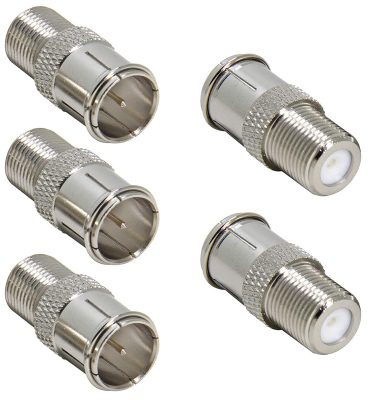Project Report For Coax Connector
Introduction
Project Report for Coax Connector is as follows.
The name “coaxial” or “coax” connection refers to a connector that includes an inner conductor encased by a concentric conducting sleeve, with the conductor and shield separated by an insulating substance. (RF [radio frequency] connections are not always coax, although all coax are coax.) They might be used for board-to-board, cable-to-board, or cable-to-cable applications.
Coax connections operate from DC to high-megahertz frequencies and transfer analogue communications while minimising RF signal losses. To benefit from shared impedance and shielding, specialised coaxial cables are connected using cable coax connectors. There are countless variations of coaxial connections.
Since these are single circuit, in-line connections, there are adapters available to connect between various series. They come in a wide range of sizes to fit various cable diameters, and each one works in concert with the others to assure signal transmission without interruption. Some have switches that, when linked to an external power source, enable internal batteries to be unplugged.
Coax cable is occasionally used by telephone companies to link their central offices to telephone poles located close to their consumers. Coaxial cable is still used in some households and businesses, although twisted pair cabling has essentially replaced coax as the most common Ethernet networking medium in businesses and data centres.

Types Of Coax Connector
BNC: The Bayonet Neil-Concelman (BNC) coaxial connection, originally developed for military use, is a miniature-to-subminiature RF connector used for quick connect/disconnect in RF systems, test equipment, radio, television, and video signals. BNC connections include bayonet lugs for a twisting interaction at the female connector and are best suited for frequencies below 4 GHz since connectors become unbalanced mechanically as frequency rise towards 10 GHz.
TNC: The Threaded Neil-Concelman is the threaded model of a BNC connector, that plays higher microwave frequencies than BNC connectors. TNC Connectors are weatherproof, miniature gadgets that perform as much as 12 GHz and are normally utilized in cell telecall smartphones and RF/antenna connections to solve leakage and balance issues.
SMB: Subminiature model B connectors are smaller variations of SMA connectors, and offer advanced electric overall performance from DC to four GHz. SMB connectors are one of the maximum famous RF/microwave connector versions for commercial and telecommunications system and provide a easy snap-on coupling layout for semi-inflexible cables with rare connections.
QMAs: rapid lock and rapid detach SMA connection versions that share the same internals as QMA connectors. QMA connectors are excellent for cable routing, assembly, and maintenance as well as industrial and communications applications because they provide quicker, more secure mating and greater performance in RF connections.
Get Completely Custom Bankable Project Report
Market Potential Of Coax Connector
The global coax connectors market is expected to exceed US$ 3.6 billion by 2033. From 2023 to 2033, it is expected to grow at a 4.5% CAGR. The market is expected to be worth US$ 2.3 billion in 2023.
Global defence spending was over $1.8 trillion in 2016, and is expected to climb to approximately $2.4 trillion by 2022. With governments around the world substantially increasing defence spending, multi coaxial connection demand is expected to rise during the forecast period. Connecting homes and businesses to high-speed broadband networks requires the usage of multi-coaxial cables. These cables are commonly used in conjunction with other technologies, such as fiber-optic cables, to provide clients with high-speed data transfer.
As electronic systems become more complicated and sophisticated, there is an increasing demand for connectors that can withstand high power levels, high data rates, and harsh environments. These stringent requirements are met by multi-coaxial connectors, which provide great reliability, low insertion loss, and outstanding shielding performance.
due to their capacity to transmit numerous signals concurrently with minimum interference, multi-coaxial connectors are commonly utilised in defence applications. They are frequently used in a wide range of military and defence applications. as an example:- Radar systems, satellite communication systems, and electronic warfare systems are just a few examples. With the country’s defence budget increasing, demand for multi coaxial connectors is expected to rise over the assessment period.

